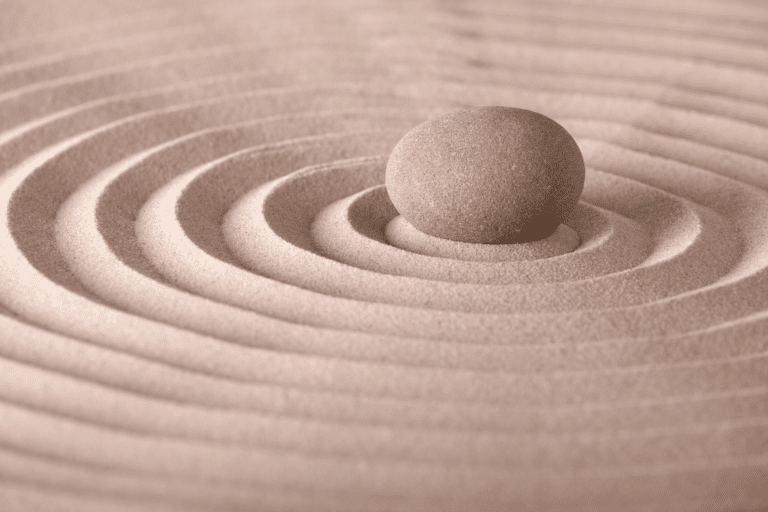In an age where convenience often dictates lifestyle choices, there is a quiet revolution brewing in kitchens around the world. It’s a movement that doesn’t involve high-tech gadgets or synthetic materials but a return to the roots—literally. This movement is about rediscovering the wisdom of our ancestors, who used natural materials like clay, bronze, brass, copper, and cast iron to prepare their meals. My journey into this realm is not just about culinary preference but an homage to the generations before me—my mother, grandmothers, and all the ancestors who knew the subtle art of harnessing nature’s elements.
The Historical Tapestry
Since time immemorial, humankind has turned to the earth for sustenance—not just for food but for the means to prepare it. The clay pot, an emblem of primordial cookery, has been unearthed in the remnants of ancient civilizations, its uses as varied as the cultures that crafted it. These vessels, formed from the very soil upon which these civilizations thrived, are not mere containers but crucibles where food and fire conjure wholesome sustenance.
As societies evolved, metals like bronze, brass, and copper began to gleam in the firelight of progress. These materials, bestowed with a lustrous finish and robust strength, offered new avenues for culinary exploration. The introduction of cast iron in the 18th century marked a new epoch in cookery, renowned for its staunch durability and unmatched prowess in heat conduction.
A Closer Look at Traditional Cookware
Each element used in traditional cookware carries a whisper of the past, laden with health benefits often overshadowed by the allure of modern convenience:
- Clay Pots: These vessels engage in a slow dance with heat, cooking food gently and evenly. The porous nature of clay traps heat and moisture, circulating them back into the food, enhancing flavors while preserving nutrients. The slight alkalinity of clay also neutralizes acidity in foods, making dishes naturally milder and kinder to the stomach.
- Copper: This reddish-gold metal is a conduit for quick and even heating, revered for its ability to control precise temperatures. Copper pots are cherished in the making of delicate sauces and confections, where even a slight variance in heat can mean the difference between perfection and disaster. Additionally, copper releases ions that have antimicrobial properties, ensuring cleanliness and purity in cooking.
- Bronze and Brass: These alloys are not just beautiful to behold but functional in preserving the health of those who dine from them. Known for their natural ability to kill bacteria and other microbes, bronze and brass utensils ensure that food is not only cooked but also purified.
- Cast Iron: Beloved for its ruggedness and ability to retain heat, cast iron also fortifies our meals with iron—a crucial mineral often lacking in modern diets. A well-seasoned cast iron skillet imparts a unique flavor to every dish, a testament to the many meals it has lovingly prepared.
Best Practices for Using Traditional Cookware
Embracing traditional cookware requires more than just culinary skill—it demands a reverence for the material and an understanding of its nature. Here are some essential tips for using and maintaining different types of traditional cookware. I use ash, we collect from our fireplace in winter months for cleaning clay, brass, bronze, copper and cast iron utensils.
- Clay Pots:
- Seasoning: Before the first use, submerge the pot in water for 24 hours to strengthen the clay and prevent cracking. Afterward, fill it with water, bring it to a boil, and then let it simmer for about 30 minutes. This process seals the pores and prepares the pot for cooking.
- Cleaning: Use warm water and a brush; detergents should be avoided as they can seep into the clay’s pores and alter the flavor of your food. Dry thoroughly before storing to prevent mold growth.
- Cooking: Always start with a cold oven or a low heat to prevent thermal shock. Clay pots are ideal for slow cooking, retaining moisture and nutrients beautifully.
- Copper:
- Avoiding Corrosion: Never cook acidic foods like tomatoes or citrus in unlined copper cookware, as copper can react with acidity and leach into the food, leading to potential health risks.
- Polishing and Maintenance: Copper tarnishes over time, so regular polishing with a lemon-salt mixture or a commercial copper cleaner is necessary to keep it shining and functional.
- Lining: Most modern copper pots come lined with tin or stainless steel, which prevents food from contacting copper directly, making it safe for cooking a wider range of recipes.
- Bronze and Brass:
- Pre-use Treatment: Like copper, these metals should be thoroughly cleaned and dried before first use to remove any manufacturing residues.
- Polishing: Regular polishing is necessary to maintain the antimicrobial surface properties. Use a gentle cleaning agent designed for brass or bronze to avoid scratching the surface.
- Usage: Ideal for slow-cooked dishes, these metals ensure even heat distribution and enhance the flavors of the ingredients.
- Cast Iron:
- Seasoning: Before first use, wash the cookware with hot, soapy water. Dry it, then apply a thin layer of coconut or avocado oil and heat it in the oven at 375 degrees Fahrenheit for about an hour. This process should be repeated periodically to maintain the non-stick surface.
- Cooking and Care: Always preheat the pan before adding food. Avoid boiling water in cast iron as it can cause rust. After each use, clean with a stiff brush and hot water, dry thoroughly, and apply a light coat of oil before storing.
- Rust Prevention: If rust appears, scrub it off, wash the pan, dry it completely, and re-season. Store your cast iron in a dry place to prevent moisture accumulation.
By following these best practices, you can maximize the longevity and effectiveness of your traditional metal cookware, ensuring that each meal is not only delicious but also a testament to the timeless techniques passed down through generations.
Wooden Utensils: Choosing and Caring for Natural Tools
Wooden cooking utensils are cherished for their beauty, functionality, and the gentle way they interact with cookware. The type of wood used can affect the durability, aesthetics, and even the taste of your food. Here’s a breakdown of popular woods used for cooking utensils and how to care for them:
- Bamboo: Renowned for its sustainability and strength, bamboo is a popular choice for eco-conscious cooks. It’s naturally antibacterial and less porous than hardwoods, making it resistant to stains and odors. Bamboo utensils are lightweight and can withstand a lot of wear and tear, making them ideal for everyday cooking.
- Hardwoods:
- Walnut: Walnut is valued for its rich color and grain, which makes it not only a functional kitchen tool but also a decorative piece. It’s quite durable and resistant to warping and cracking. Walnut utensils add a touch of elegance to any kitchen.
- Acacia: Known for its toughness and water resistance, acacia is an excellent choice for kitchen utensils. It has a natural grain finish that can vary from light amber to dark mahogany, making each utensil unique.
- Teak: Teak is one of the most durable woods due to its high oil content, which helps it resist moisture and bacteria. This makes it an excellent choice for items like cutting boards and spatulas that undergo frequent and heavy use.
- Olive Wood: Olive wood is not only beautiful, with its distinctive, swirling patterns, but also extremely hard and dense. It is perfect for crafting spoons and ladles that are used in high-temperature cooking. Its smooth surface ensures that it won’t scratch delicate cookware.
- Maintenance and Care:
- Cleaning: After use, wash wooden utensils with warm, lemony water or baking soda and dry them thoroughly. Avoid using the dishwasher as the intense heat and prolonged exposure to water can cause the wood to crack and warp.
- Conditioning: Regularly condition your wooden utensils. I simply use my coconut or avocado oil after every use for conditioning my wooden utensils. This prevents the wood from drying out and cracking, and it helps to maintain the natural antibacterial properties of the wood.
- Storage: Store wooden utensils in a dry place to prevent mold and mildew growth. If possible, store them in a way that allows air circulation around them, such as in a utensil holder or a drawer with compartments.
By selecting the right type of wood and following these care guidelines, your wooden utensils can last for many years, becoming an integral part of your cooking tradition. Each type of wood brings its own unique qualities to the kitchen, allowing you to choose tools that match both your cooking style and aesthetic preference.
Embracing Wood and Assessing Silicone
Wooden ladles and utensils accompany these traditional materials harmoniously. Gentle on the cookware’s surface and non-conductive, wooden tools ensure that the integrity of the pot or pan is maintained without scratching or reacting chemically with the food.
In contrast, modern silicone utensils represent a paradox. While praised for their heat resistance and non-corrosive qualities, they lack the natural grace and biodegradable virtues of wood. Silicone, a synthetic rubber, does not leach harmful chemicals and can withstand intense temperatures without melting, making it a seemingly safe choice. However, it does not possess the same enduring life cycle or environmental neutrality as materials gifted by nature. I keep silicon spatulas handy, but beyond that there’s not much place for these in my household.
A Personal Culinary Ethos
My journey into the heart of traditional cooking is both a personal revival and a cultural crusade. It is about more than taste and technique; it’s about sustaining a legacy imbued with the wisdom of the earth. These ancient tools are not relics of the past but beacons for the future, guiding us back to a way of life where food is crafted with intention and respect. To cook with traditional cookware is to partake in a lineage of gastronomy rooted deep in the bedrock of history. It is a choice to eschew the fleeting allure of modern shortcuts in favor of the timeless dance of elements. As we forge ahead into the future, let us carry forward the legacy of our ancestors, not as a nostalgic echo but as a living, breathing practice of health, heritage, and heart.





